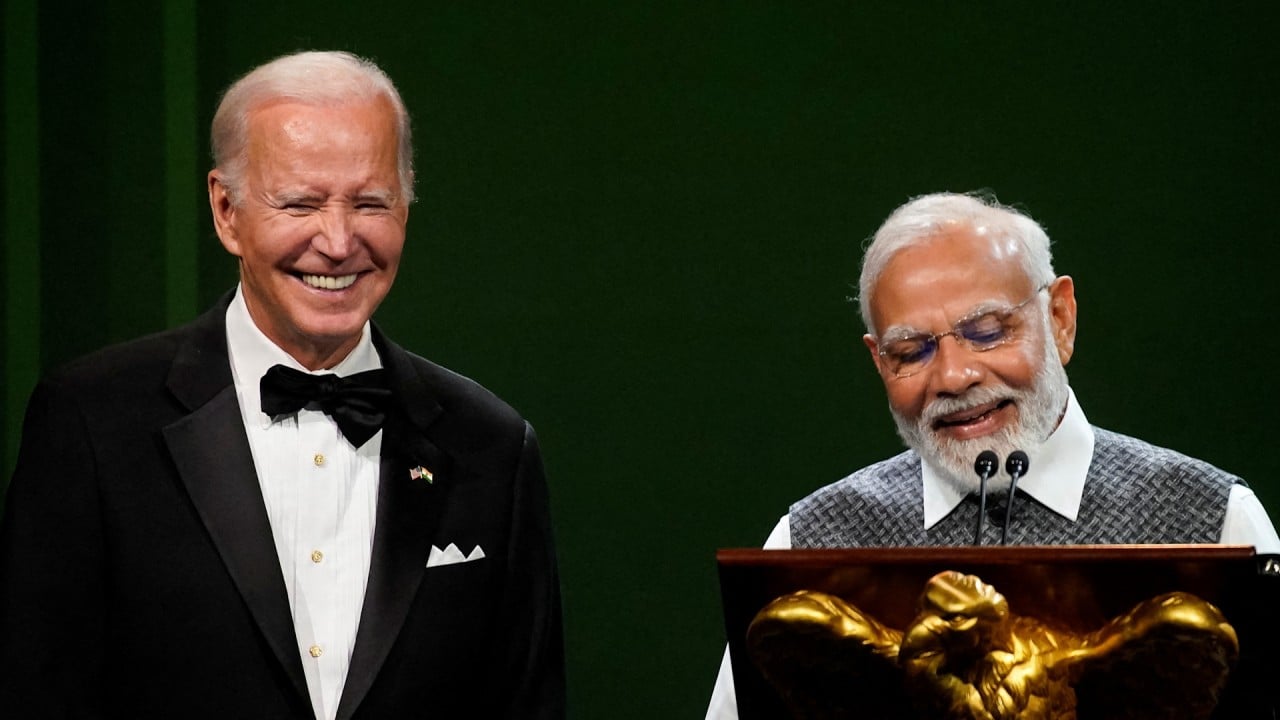
Modi’s much-hyped US visit has shifted no sand in the Indo-Pacific alliance
- India’s policy of strategic autonomy raises questions about whether it will enter into a formal alliance with the US, continue engaging with China or uphold long-standing ties with Russia
- Also, the reality of geoeconomics looms large, with India reliant on Russian arms, and US trade with China hitting a record high last year
The US has long urged India to assume its responsibilities as the Indian Ocean’s maritime and naval centre. But in addition to the US and China, Russia has emerged as a noteworthy if discreet contributor to the Indo-Pacific.

India is the world’s largest buyer of Russian weaponry, accounting for around 20 per cent of Russia’s order book. From 2018-2022, Russia was India’s biggest source of weapons, contributing 45 per cent of India’s arms imports. France was the second-largest supplier with 29 per cent, the US was third with just 11 per cent.
The same asymmetry exists on the economic front. Last year, India-China trade reached an all-time high of US$135.98 billion, according to Chinese customs data. According to India’s commerce ministry, however, which marks the financial year as starting from April 1, the US was India’s largest trading partner in 2022-2023 with US$128.55 billion worth of trade, and China was in second place. But whichever the figure, it is dwarfed by the value of US-China trade, which grew 2.5 per cent last year to reach a record US$690.6 billion.
Four lawmakers issued a statement, calling Modi addressing a joint session of Congress a “shameful” display and arguing that in allowing it, “Congress undermines its ability to be a credible advocate for the rights of religious minorities and journalists around the world”. Imagine the reaction from China if the same treatment were meted out to President Xi Jinping.
India remains in a security quandary, given China’s development, Russia’s strategic convergence with China and the US’ conceptually ambiguous Indo-Pacific geopolitical stance. In addressing this predicament, India has moved from non-alignment to strategic autonomy, but this also raises questions about its strategic trajectory.
How India can claim its rightful place in US camp
From suspicion to antagonism, past complaints to future prospects, it has taken the US and India three-quarters of a century just to establish an economic-strategic relationship. Modi’s trip to the US was little more than an engagement aimed at devising strategies to counter an assertive China and expanding the US-India partnership’s role in promoting stability in the region.
The meeting, held with the professed intention of cooperation, connectivity and a strategic partnership, appeared to offer little more than Washington’s desire to protect its Indo-Pacific interests by building deeper connections with New Delhi. For all the hype and hope over Modi’s visit, no sand has shifted for the much touted Indo-Pacific alliance, nor will it any time soon.
Professor Syed Munir Khasru is chairman of the international think tank IPAG Asia-Pacific, Australia, with a presence also in Dhaka, Delhi, Dubai, and Vienna



